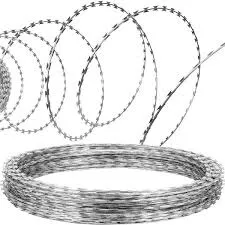Nov . 04, 2024 19:57 Back to list
best steel grating
Understanding the Best Steel Grating A Comprehensive Overview
Steel grating is a crucial component in numerous industrial and architectural applications. It consists of a series of parallel bars or slits, typically made from steel, which are welded or forged together to create a grid. This versatile product plays a significant role in enhancing safety, reducing maintenance costs, and increasing project durability. In this article, we will delve into various aspects of steel grating, including types, benefits, applications, and proper selection guidelines, ensuring that readers have a thorough understanding of what constitutes the best steel grating.
Types of Steel Grating
When discussing steel grating, it is essential to recognize that there are several types, each tailored to meet specific needs. The most common types include
1. Bar Grating This is the most widely used form of steel grating, composed of load-bearing bars and cross bars. Bar grating can be manufactured using various methods, including welded, swaged, and press-locked configurations.
2. Expanded Metal Grating Made from a solid sheet of metal that is cut and expanded, this type provides a high strength-to-weight ratio and is often used in applications requiring high impact resistance.
3. Fiberglass Grating Though not a steel product, it’s worth mentioning as an alternative to steel grating. Fiberglass grating is lightweight, corrosion-resistant, and maintains structural rigidity, making it suitable for specific environments.
4. Architectural Grating This type focuses more on aesthetics while still providing functionality. It is often used in public spaces, pedestrian walkways, and other areas where visual appeal is essential.
Benefits of Steel Grating
Choosing steel grating over other materials offers many advantages
1. Strength and Durability Steel grating is known for its exceptional strength, making it ideal for heavy-load applications, from industrial platforms to walkways.
2. Safety The open design of steel grating allows for excellent drainage, reducing slip hazards in wet environments. Additionally, it can be designed with anti-slip surfaces to further enhance safety.
3. Low Maintenance Steel grating is resistant to wear and tear, and its durability results in lower maintenance costs compared to other materials.
4. Customizability Steel grating can be easily tailored in terms of size, shape, and material properties, allowing for versatility in design.
best steel grating

5. Cost-effectiveness While the initial investment might be higher than alternative materials, the long lifespan and low maintenance needs of steel grating often result in better value in the long term.
Applications of Steel Grating
The applications for steel grating are diverse and extensive
- Industrial Use In factories and production facilities, steel grating is commonly used for flooring, walkways, and platforms, providing a safe and durable surface for workers.
- Construction It is employed in building construction, particularly in stair treads and drainage systems.
- Transportation Steel grating is used in bridges, roadways, and tunnels, where its strength can support heavy vehicular traffic while allowing for natural light and air circulation.
- Wastewater Treatment In wastewater treatment plants, steel grating is utilized for grates and platforms, as it can withstand the corrosive environment.
Selecting the Best Steel Grating
When selecting steel grating, several factors should be considered
1. Load Requirements Assess the load the grating needs to support and choose a product designed for that specific load class.
2. Environment Consider the environmental conditions, including exposure to chemicals, moisture, or extreme temperatures, as these can affect the material’s performance.
3. Design Specifications The layout and architectural needs of the project may influence the choice of grating type.
4. Safety Standards Ensure that the selected steel grating meets the relevant safety regulations and standards in your industry.
In conclusion, the best steel grating combines strength, durability, safety, and versatility. Understanding the different types, benefits, applications, and selection criteria will empower decision-makers in their quest for the ideal grating solution, ultimately resulting in safer and more efficient environments for work and leisure. Whether in construction, manufacturing, or any other industry, investing in quality steel grating is a smart choice that pays dividends in the long run.
-
High Quality Africa Chicken Netting Hexagonal Wire Mesh Supplier & Factory – Durable & Affordable
NewsJul.04,2025
-
High-Quality Fiberglass Mosquito Mesh Net for Window Reliable Exporters & Factories
NewsJul.04,2025
-
Temporary Fence for Yard - Easy Install & Durable Temporary Yard Fencing Solutions
NewsJul.04,2025
-
High Quality 9 Gauge Expanded Metal Mesh & Chain Link Wire Mesh Fence Manufacturer
NewsJun.10,2025
-
Barbed Wire Roll Price - Wholesale Exporters & Reliable Factories Supply
NewsJun.10,2025
-
High-Quality Temporary Mesh Fence Panels for Sale Durable Temporary Fence Panels Supplier
NewsJun.10,2025



